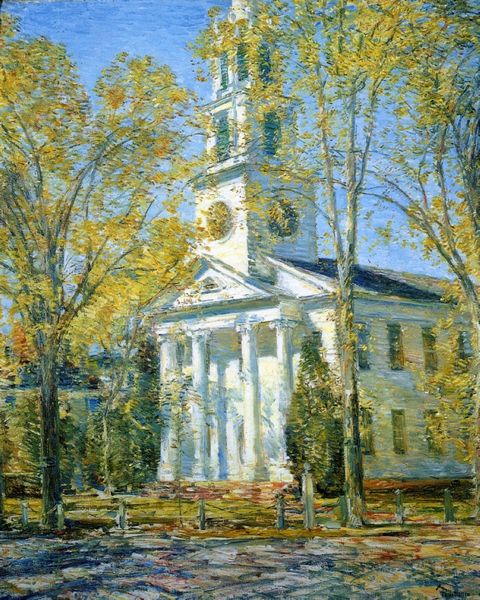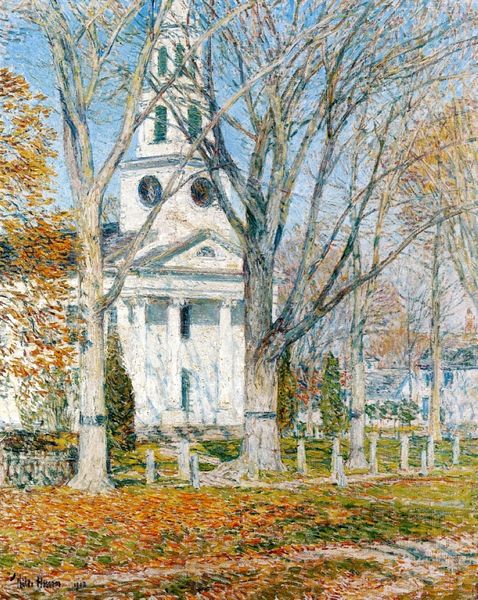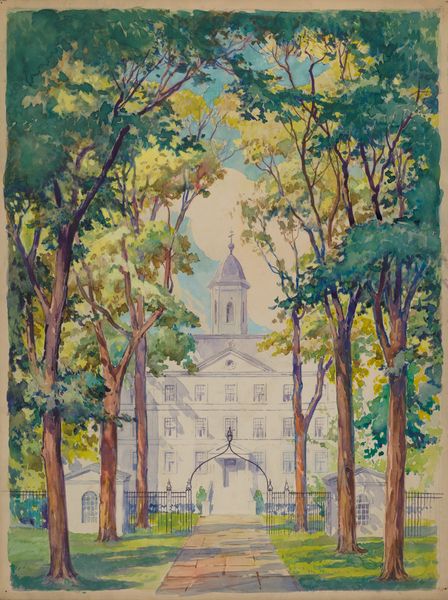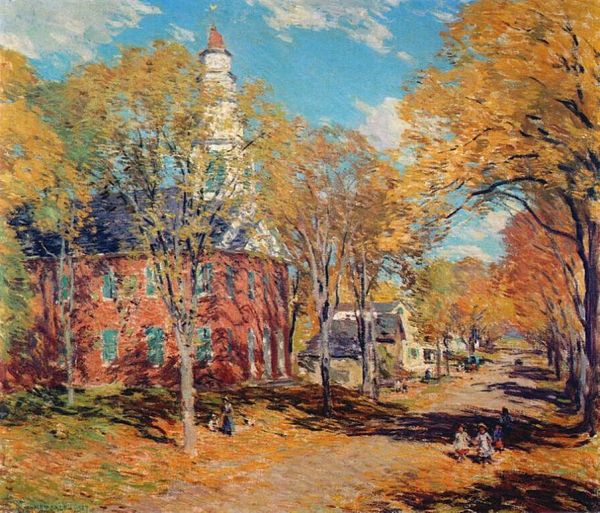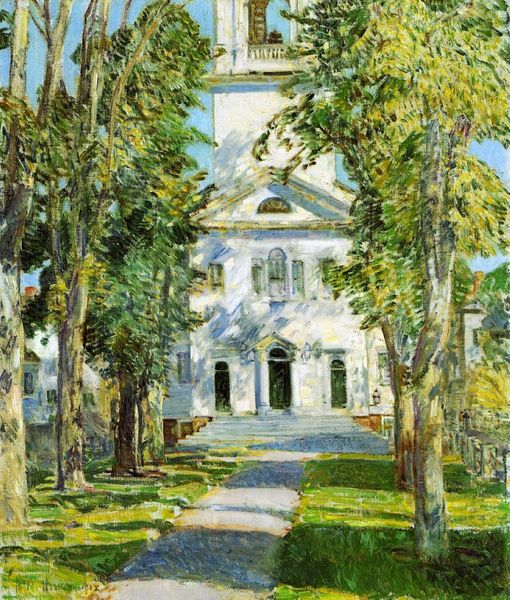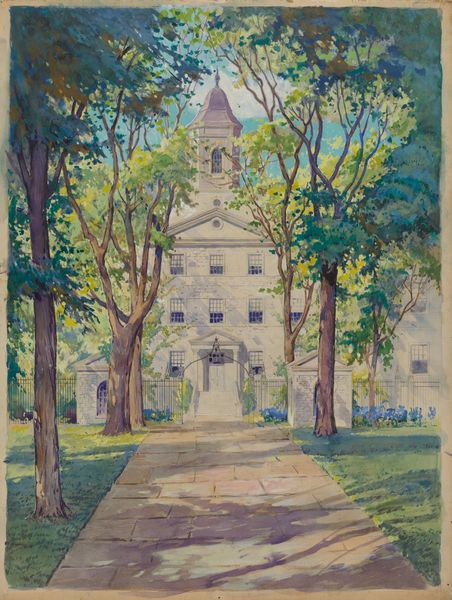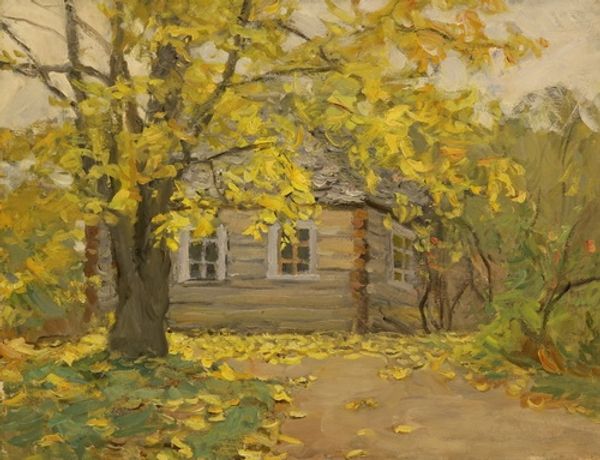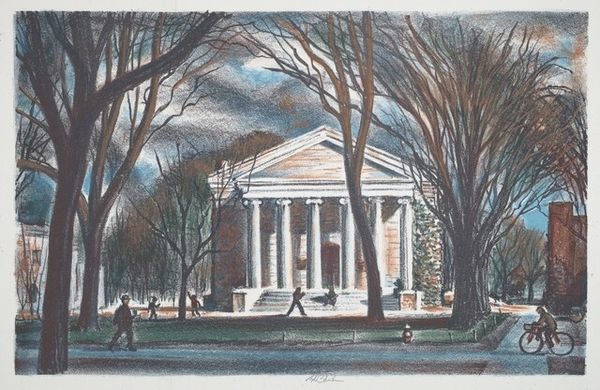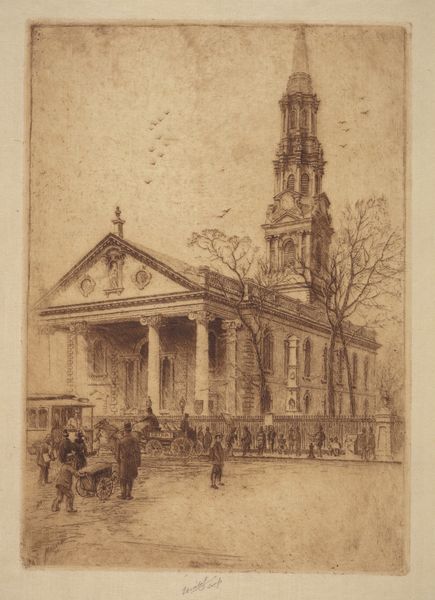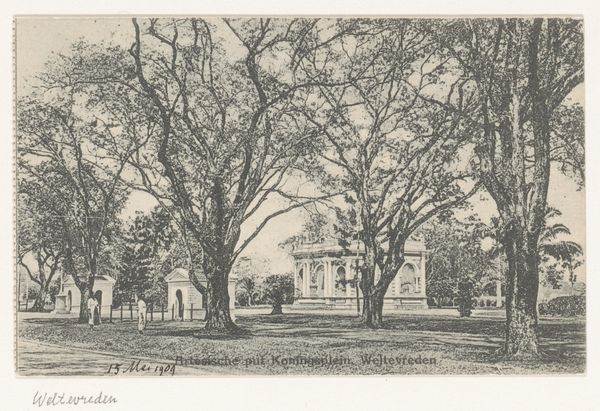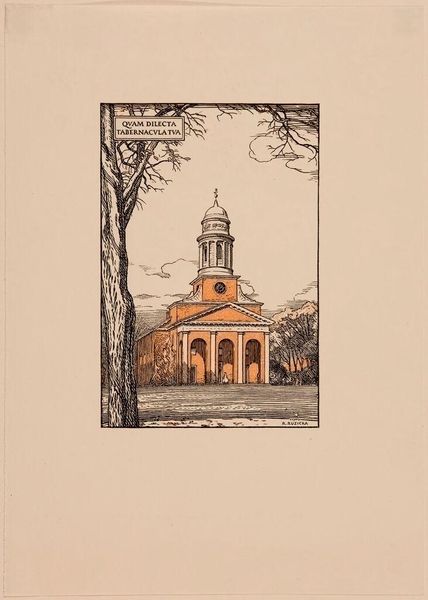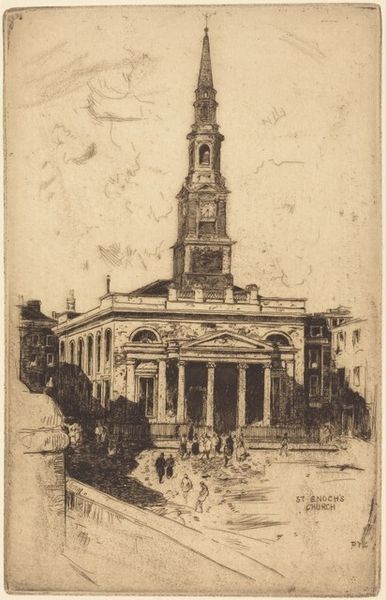
Copyright: Public Domain: Artvee
Childe Hassam painted this impressionistic view of the Church at Old Lyme, Connecticut, in oil on canvas. Painted in the late 19th or early 20th century, it reflects the cultural conservatism and institutional power of the church within American society. Consider the visual cues: the church is centrally located within the composition and its classical architecture lends it an air of establishment authority. Note how it towers over the graveyard, reinforcing its role in mediating life and death. Hassam was among a group of American artists who looked to French Impressionism for inspiration while also focusing on specifically American subject matter. We might ask whether Hassam is simply capturing a picturesque scene, or subtly commenting on the social structures of his time? Is he reinforcing those structures, or perhaps hinting at their limitations? To fully understand the painting, we might consult period documents, church records, and Hassam’s own writings. As art historians, we see how artistic meaning is always contingent on its social and institutional context.
Comments
No comments
Be the first to comment and join the conversation on the ultimate creative platform.
